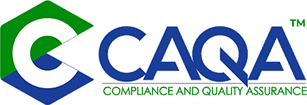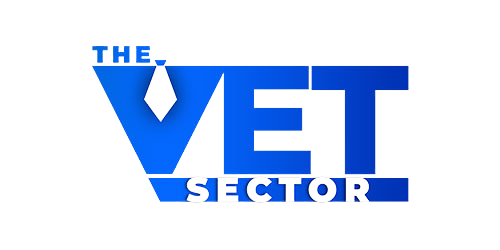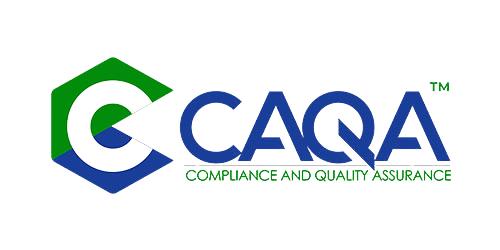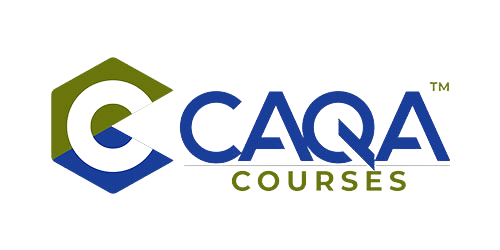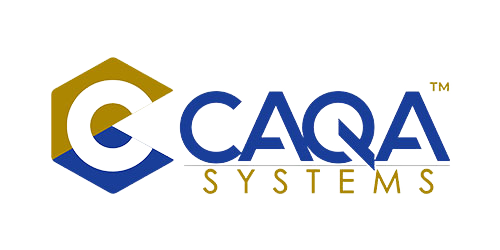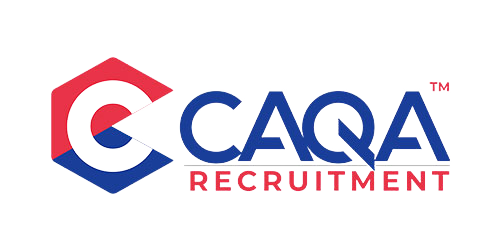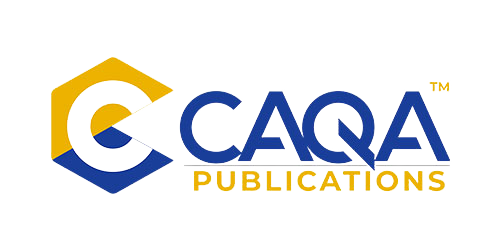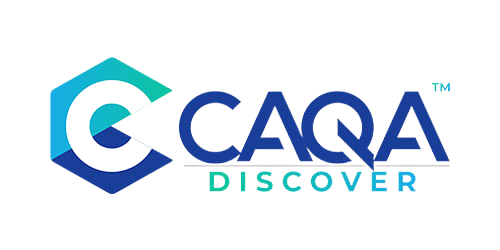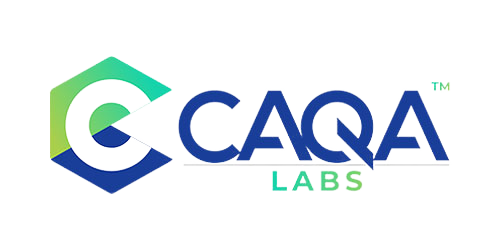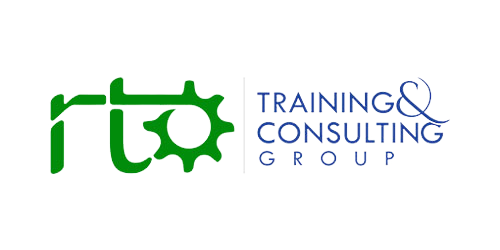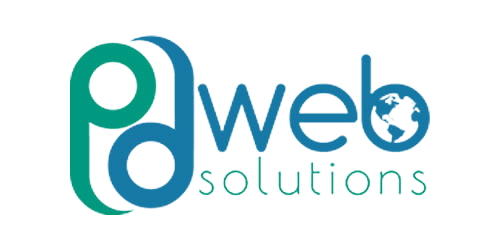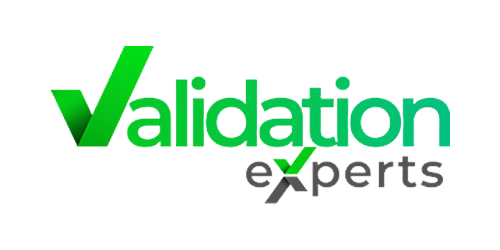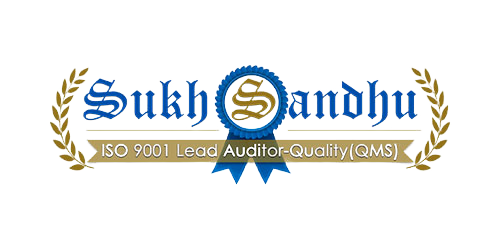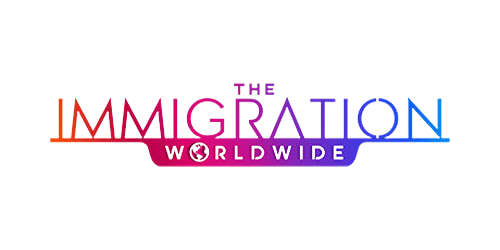THE END OF AN ERA: WHY JULY 2025 WILL TRANSFORM COMPLIANCE FOREVER
The countdown to the most significant regulatory reset in a decade has begun. After nearly three years of sector consultation, the Standards for RTOs 2025 are now finalised. They will take effect on 1 July 2025, marking not merely an update but a fundamental reimagining of what compliance means in Australia's vocational education and training sector. This transformation represents the culmination of years of growing frustration with the 2015 Standards, which were widely criticised for their complexity, paperwork burden, and misalignment with contemporary industry needs. The new standards signal nothing less than a compliance revolution—a decisive shift from process-driven box-ticking to outcome-focused quality assurance that prioritises student success, industry relevance, and educational integrity.
The implications for RTOs are profound and far-reaching. Every aspect of operations—from training delivery and assessment validation to student support, workforce development, and governance structures—will be subject to heightened scrutiny and more demanding requirements. This is not an incremental change but a comprehensive reset that will separate forward-thinking providers from those anchored to outdated compliance paradigms. The organisations that thrive in this new regulatory environment will be those that recognise the 2025 Standards not as a compliance burden but as a strategic opportunity to elevate quality, enhance reputation, and deliver genuine value to students and industry partners.
THE FOUR PILLARS: UNDERSTANDING THE NEW QUALITY FRAMEWORK
At the heart of the 2025 Standards lies a complete restructuring of the compliance framework around four core quality areas, each addressing a critical dimension of RTO operations and each demanding significant transformation in both mindset and practice. This pillar structure represents a decisive move away from the complex, often overlapping requirements of the 2015 Standards toward a more coherent and transparent approach that clarifies expectations while maintaining flexibility in implementation. The four quality areas—Training and Assessment, Student Support, VET Workforce, and Governance—collectively establish a comprehensive blueprint for excellence that touches every aspect of an RTO's operations.
This restructuring serves multiple purposes: it makes compliance requirements more accessible and understandable for RTOs; it creates clearer connections between regulatory expectations and quality outcomes; and it allows for more nuanced, risk-based approaches to different aspects of compliance. Most significantly, it shifts the focus from documentary evidence to demonstrated capability, requiring RTOs to prove not just that they have appropriate policies and procedures in place but that these translate into genuine quality in practice. This outcomes orientation represents perhaps the most profound philosophical shift in the new standards, challenging RTOs to move beyond technical compliance to authentic quality assurance in all aspects of their operations.
THE TRAINING REVOLUTION: NO MORE TICK-AND-FLICK VALIDATION
The Training and Assessment quality area introduces revolutionary changes to how RTOs must approach their core educational functions, with particular emphasis on industry engagement, assessment validation, and recognition of prior learning. The days of superficial industry consultation and perfunctory assessment validation are decisively over. Industry engagement must now be ongoing, meaningful, and demonstrably influential in shaping training and assessment strategies. This requires not just initial consultation during course development but continuous dialogue with employers, industry bodies, and other stakeholders to ensure that training remains relevant, current, and aligned with workplace needs. RTOs must document this engagement rigorously, showing clear connections between industry input and actual training practice.
Assessment validation undergoes an equally profound transformation, with the introduction of risk-based approaches that target resources where they are most needed. High-risk training products—such as those in construction, aged care, or aviation, where student or public safety is particularly significant—will require more frequent validation cycles. Every training product must now be validated at least once every five years, and validation must be conducted by individuals independent of the design and delivery of the training being validated. This independence requirement represents a significant shift from previous practices, where validation was often conducted by the same staff responsible for assessment design or delivery, creating potential conflicts of interest that compromised quality assurance. Additionally, accelerated learning and unit clustering must now be explicitly justified and documented, ending the era where compressed delivery timeframes could be implemented without clear pedagogical rationales.
Recognition of Prior Learning (RPL) processes face heightened scrutiny under the new standards. Evidence supporting RPL applications must be demonstrably current, authentic, and sufficient to establish genuine competency. The mere possession of prior credentials or general work experience will no longer suffice; RTOs must verify that applicants can actually demonstrate workplace competency in the specific skills being recognised. This stricter approach closes loopholes that have sometimes allowed students to gain qualifications without developing genuine capability, enhancing the integrity and value of VET qualifications in the process. These combined changes to training and assessment requirements signal a decisive prioritisation of educational quality over administrative convenience. This reorientation may challenge RTOs accustomed to more process-focused compliance approaches.
THE SUPPORT MANDATE: STUDENT SUCCESS BECOMES NON-NEGOTIABLE
Student support undergoes a dramatic elevation under the 2025 Standards, moving from a peripheral consideration to a central compliance priority with detailed, specific requirements. Pre-enrollment assessments become mandatory for all students, creating a proactive approach to identifying and addressing support needs before training commences. These assessments must cover language, literacy, numeracy, and digital (LLND) capabilities, ensuring that students have the foundational skills needed for their chosen training or receive appropriate support to develop these skills. This requirement eliminates the practice of enrolling students in courses for which they lack the necessary capabilities, enhancing both completion rates and the quality of learning experiences.
Beyond these initial assessments, RTOs must now provide comprehensive, tailored support throughout the student journey. Wellbeing services—including mental health support—must be specifically designed for each training product and student cohort, recognising that different learner groups have different needs. Cultural safety and inclusion now receive explicit attention, with policies required to address the needs of diverse student populations, including specific provisions for First Nations learners. Staff must receive cultural safety training to ensure they can create genuinely inclusive learning environments. Perhaps most significantly, complaints and appeals processes are no longer treated as administrative procedures but as drivers of continuous improvement. RTOs must demonstrate how feedback from these processes informs actual changes to training delivery, support services, and organisational practices.
This comprehensive approach to student support reflects a recognition that educational quality depends not just on training content and delivery but on addressing the holistic needs of diverse learners. It challenges RTOs to develop more sophisticated, individualised approaches to support that go far beyond the generic services often provided under previous standards. While this transformation may require significant investment in systems, staff development, and support resources, it also offers substantial benefits in terms of improved completion rates, enhanced student satisfaction, and stronger alignment with contemporary expectations for educational quality and inclusivity.
THE WORKFORCE IMPERATIVE: RAISING THE BAR FOR ALL STAFF
The VET Workforce quality area introduces unprecedented requirements for staff development and capability, extending compliance obligations well beyond trainers and assessors to encompass all RTO personnel. Every staff member—including administrative personnel, compliance officers, and management—must now engage in ongoing professional development, with annual records maintained to evidence this continuous learning. This universal approach recognises that quality in vocational education depends on capability throughout the organisation, not just among those directly involved in training delivery. It challenges RTOs to develop comprehensive, strategic approaches to workforce development that build capacity across all functional areas.
For trainers specifically, the requirements become even more demanding. Those working under supervision must have clearly documented oversight arrangements, with explicit provisions for how their work is monitored and supported by fully qualified colleagues. Industry experts involved in training delivery must be formally integrated into the RTO's strategies, with clear documentation of their roles, qualifications, and the supervision arrangements that ensure quality and compliance. The standards for demonstrating industry currency and vocational competence have been significantly strengthened, requiring more substantial and recent evidence that trainers possess not just theoretical knowledge but practical workplace capability in their fields of instruction.
These enhanced workforce requirements reflect a recognition that the quality of vocational education ultimately depends on the capability, currency, and commitment of the people delivering it. They challenge RTOs to move beyond minimal compliance approaches to staff development and embrace more comprehensive, strategic workforce planning that ensures all personnel contribute effectively to quality outcomes. While meeting these requirements will demand greater investment in professional development, supervision, and documentation, the resulting enhancement in staff capability promises significant benefits in terms of training quality, student satisfaction, and organisational performance.
THE GOVERNANCE TRANSFORMATION: LEADERSHIP UNDER THE MICROSCOPE
The Governance quality area introduces the most stringent leadership and accountability requirements ever seen in the VET regulatory framework. Fit and proper person requirements for owners, directors, and key personnel have been significantly strengthened, creating higher barriers to entry and continued operation for those with questionable histories or inadequate capabilities. Detailed compliance records must be maintained, documenting every aspect of the RTO's quality assurance activities and providing clear evidence of ongoing conformity with all regulatory requirements. Financial monitoring moves beyond annual checks to continuous oversight, with cash flow tracking and proactive financial risk management now mandatory components of governance systems.
Conflicts of interest receive unprecedented attention, with requirements for comprehensive documentation and active management of potential conflicts at all levels of the organisation. This includes not just financial interests but also personal relationships, professional affiliations, and other factors that might compromise independent judgment or create actual or perceived impropriety. Third-party training partnerships—long a high-risk area for compliance—now require formal agreements and regular quality reviews to ensure that all training delivered under an RTO's registration meets the same high standards, regardless of who actually provides it. Most fundamentally, RTOs must demonstrate self-assurance—a proactive approach to compliance and quality management that identifies and addresses potential issues before they become problems, rather than simply responding to regulatory intervention.
This governance revolution places unprecedented responsibility on RTO leadership to create and maintain genuinely compliant, high-quality educational organisations. It challenges traditional approaches to compliance as a specialised function separate from strategic leadership, instead embedding quality assurance and regulatory responsibility into the highest levels of organisational governance. While meeting these enhanced requirements will demand significant investment in systems, processes, and capability development, the resulting improvements in organisational integrity and performance offer substantial benefits beyond mere regulatory compliance.
THE ACTION IMPERATIVE: PREPARING FOR JULY 2025
With just months remaining before the 1 July 2025 implementation date, RTOs face a critical strategic challenge: how to transform their compliance approaches while maintaining operational effectiveness. This transition requires careful planning, strategic resource allocation, and comprehensive change management across all aspects of the organisation. The first priority must be a comprehensive gap analysis that systematically compares current policies, procedures, and practices against the new standards, identifying specific areas requiring update, revision, or complete redesign. This analysis should examine not just formal documentation but actual operational practices, recognising that the 2025 Standards demand evidence of quality in action, not just on paper.
Following this gap analysis, RTOs must revamp their training and assessment strategies to ensure alignment with the new industry engagement and validation requirements. This includes documenting ongoing consultation processes, implementing risk-based validation schedules, and ensuring that all assessment tools meet the heightened standards for validity, reliability, and workplace relevance. Student support systems require an equally comprehensive review, with the implementation of mandatory pre-enrollment assessments, the development of tailored wellbeing services, and the creation of explicit cultural safety and inclusion policies. Staff development frameworks must be expanded to encompass all personnel, with clear documentation of professional development activities, industry currency, and supervision arrangements where applicable.
Governance structures face perhaps the most significant transformation, requiring implementation of enhanced fit and proper person checks, development of comprehensive conflict of interest registers, strengthening of third-party agreements, and creation of robust self-assurance mechanisms. Throughout all these changes, RTOs must maintain meticulous documentation that not only demonstrates compliance with specific requirements but also shows how these translate into genuine quality outcomes for students and industry partners. This documentation must be readily accessible and regularly updated, creating a living evidence base that supports continuous improvement and regulatory accountability.
THE AUDIT EVOLUTION: FROM PERIODIC INSPECTION TO CONTINUOUS ASSURANCE
Under the 2025 Standards, the nature of regulatory oversight undergoes a fundamental transformation, shifting from periodic inspections to a model of continuous assurance with targeted interventions based on risk assessment. ASQA's approach will increasingly emphasise self-assurance, requiring RTOs to demonstrate ongoing compliance rather than scrambling to prepare for scheduled audits. This shift has profound implications for how RTOs approach compliance management, necessitating more sophisticated, integrated systems that generate real-time evidence of quality practice rather than retrospective documentation prepared specifically for audit purposes.
Risk-based approaches will target regulatory resources where they are most needed, with higher-risk providers and training products receiving more intensive scrutiny. This risk assessment will consider factors such as the potential consequences of non-compliance (particularly where student or public safety is concerned), the RTO's compliance history, the complexity and volume of its operations, and the effectiveness of its self-assurance mechanisms. High-risk areas—such as accelerated delivery, third-party arrangements, and training in regulated industries—will receive particular attention, with auditors examining not just documentary evidence but actual training practices, assessment outcomes, and student experiences.
The consequences of non-compliance under this new regime are potentially severe. While ASQA has indicated a supportive approach for RTOs making genuine efforts to transition to the new standards, those that fail to address significant compliance issues face escalating regulatory action. This may include formal notices requiring rectification, increased monitoring through additional audits or reporting requirements, restrictions on scope or student numbers, or even deregistration in cases of serious or persistent non-compliance. The message is clear: RTOs must treat compliance as a continuous priority integrated into normal operations, not an occasional exercise in documentation management prompted by scheduled regulatory visits.
THE TRANSITION REALITY: FROM PAPER TO PRACTICE
While the implementation date of 1 July 2025 is fixed, ASQA has indicated a transition approach that recognises the magnitude of the changes required. RTOs will not need to reapply for registration but must submit an updated self-assurance declaration and align all documentation with the new requirements by the implementation date. This transition period is not, however, a grace period for inaction. RTOs must demonstrate progressive movement toward compliance, with clear evidence of gap analysis, planning, and systematic implementation of the necessary changes. Those who wait until the last minute to begin their transition risk being overwhelmed by the scale of the transformation required.
Support resources will be available to assist RTOs in navigating this transition, including webinars, guidance materials, and an ongoing FAQ series addressing specific aspects of the new standards. These resources offer valuable clarification and practical guidance. Still, they cannot substitute for the hard work of analysing current practices, identifying gaps, and implementing comprehensive changes across all aspects of operations. The most successful transitions will be those that treat compliance transformation as a strategic priority rather than a compliance exercise, engaging staff at all levels in understanding the new requirements and developing effective approaches to meeting them.
Throughout this transition, RTOs must balance the immediate demands of operational continuity with the strategic imperative of compliance transformation. This balancing act requires careful prioritisation, focusing initial efforts on high-risk areas while developing systematic plans for addressing all requirements by the implementation date. It also demands effective change management, ensuring that staff understand both what is changing and why these changes matter for educational quality and organisational sustainability. The RTOs that navigate this transition most successfully will be those that view it not as a regulatory burden but as an opportunity to strengthen their educational offerings, enhance their market positioning, and demonstrate their commitment to genuine quality in vocational education.
CONCLUSION: BEYOND COMPLIANCE TO QUALITY LEADERSHIP
The 2025 Standards represent far more than a regulatory update—they signal a fundamental reimagining of what constitutes quality in vocational education and how this quality should be assured. By shifting focus from process adherence to outcome achievement, from documentary evidence to demonstrated capability, and from periodic compliance to continuous assurance, the new standards challenge RTOs to move beyond minimal compliance toward genuine quality leadership. This shift presents both significant challenges and unprecedented opportunities for organisations committed to educational excellence and integrity.
The RTOs that will thrive under this new regime are those that embrace its underlying philosophy rather than merely its specific requirements. They will develop integrated approaches to quality assurance that span all aspects of their operations, building cultures where compliance is not a specialised function but a shared responsibility embedded in every role. They will leverage technology to streamline documentation and evidence collection, freeing resources for the substantive work of enhancing training quality, student support, and industry engagement. Most importantly, they will recognise that the true value of the 2025 Standards lies not in their regulatory function but in their potential to drive genuine improvements in educational practice, student outcomes, and industry satisfaction.
The compliance revolution has begun. The future belongs to those RTOs that recognise this moment not as a regulatory burden but as a catalyst for transformation—an opportunity to demonstrate their commitment to quality, integrity, and educational excellence in a sector undergoing profound change. The countdown to July 2025 continues, but the real measure of success will not be meeting the implementation deadline but embracing the quality imperative that the new standards represent. The time for leadership is now.
